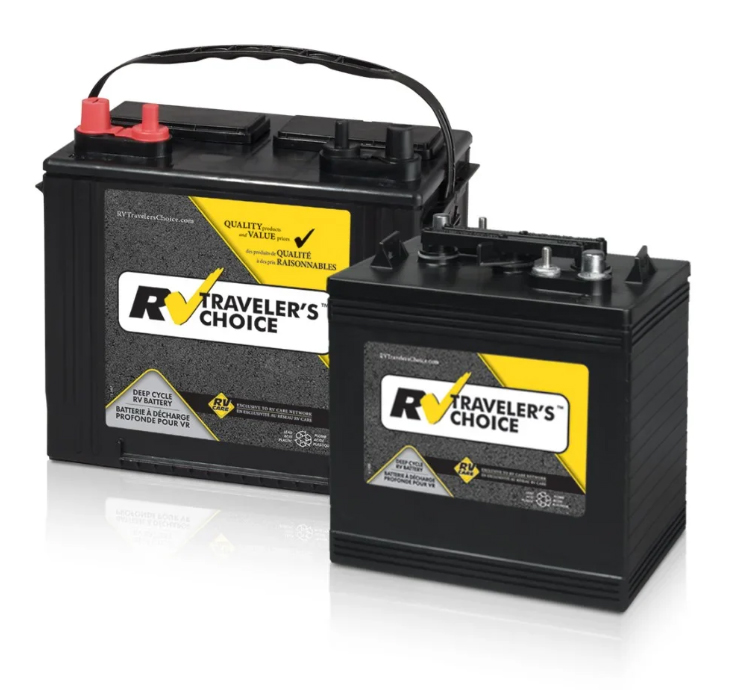RV Batteries – Which Kind is Right for Me?
Published on Jun 14, 2024
For many years there were limited options in the RV
Batteries, really the only variation was the size. In recent years a few more
types of batteries have been added to the market making something which was a
simple choice just a little more complicated. Let’s explore the three main
types of readily available RV batteries.
Flooded
Lead-Acid (FLA) Batteries: These are the most common and traditional type of
RV battery. They contain a liquid electrolyte (dilute sulfuric acid) that
submerges the lead plates. This tried and true battery remains by far the most
common in the market today mainly due to its affordability.
Pros:
1. Cost-Effective: Lead-acid deep cycle
batteries are generally more affordable upfront compared to other battery types
like AGM or lithium-ion batteries.
2. Widely Available: These batteries are
widely available, making them easier to source and replace in case of failure,
especially in remote areas.
3. Reliable Technology: Lead-acid batteries
have been in use for a long time, and their technology is well-understood and
reliable.
4. Simple Maintenance: They are relatively
easy to maintain. Regular checks for electrolyte levels and occasional
equalization charging are typically all that's required.
5. Robustness: They can withstand
overcharging and deep discharges better than some other battery types, making
them suitable for applications where occasional abuse may occur.
6. Compatibility: Lead-acid batteries
are compatible with most RV charging systems and equipment.
Cons:
1. Limited Depth of Discharge: Lead-acid batteries
should not be discharged beyond a certain depth (usually around 50-80%) to
maximize their lifespan, limiting the usable capacity.
2. Heavy and Bulky: Lead-acid batteries
are significantly heavier and bulkier compared to newer battery technologies
like lithium-ion, which can impact RV weight and available space.
3. Limited Cycle Life: Lead-acid batteries
have a limited number of charge-discharge cycles compared to lithium-ion
batteries, resulting in a shorter overall lifespan.
4. Maintenance Required: While relatively
simple, lead-acid batteries require periodic maintenance, including checking
electrolyte levels and occasionally equalizing the cells, which may be
inconvenient for some users.
5. Slow Charging: Lead-acid batteries
generally have slower charging times compared to lithium-ion batteries, which
can be a drawback if rapid charging is needed.
Absorbent
Glass Mat (AGM) Batteries: AGM batteries are a type of sealed lead-acid
battery. They use a fiberglass mat to absorb the electrolyte, which makes them
spill-proof and maintenance-free. AGM batteries are more expensive than FLA
batteries but offer better performance, faster charging, and can be mounted in
various positions without leaking.
Pros:
1. Maintenance-Free: AGM batteries are
sealed, so they are maintenance-free and don't require watering or electrolyte
checks like flooded lead-acid batteries.
2. Spill-Proof: Unlike flooded
lead-acid batteries, AGM batteries are spill-proof, making them safer to use in
confined spaces or positions where spills could occur.
3. Versatility: AGM batteries can be
mounted in various orientations (upright, sideways, etc.) without risk of acid
leakage, providing more flexibility in installation.
4. Fast Charging: AGM batteries can
accept higher charge rates compared to flooded lead-acid batteries, allowing
for faster charging times.
5. Deep Cycle Capabilities: AGM batteries are
designed for deep cycling applications, making them suitable for use as house
batteries in RVs where frequent deep discharges are common.
6. Low Self-Discharge Rate: AGM batteries have a
lower self-discharge rate compared to flooded lead-acid batteries, which means
they can hold their charge for longer periods when not in use.
7. Vibration Resistance: The construction of
AGM batteries with the absorbent glass mat helps to prevent internal components
from vibrating loose, making them more resistant to vibration damage, which is
beneficial in mobile applications like RVs.
Cons:
1. Higher Cost: AGM batteries are
typically more expensive upfront compared to flooded lead-acid batteries, which
can be a significant drawback for some users.
2. Sensitive to Overcharging: While AGM batteries
can accept higher charge rates, they are sensitive to overcharging. Care must
be taken to ensure that the charging system is properly configured to avoid
damage to the batteries.
3. Limited Lifespan: AGM batteries have a
limited lifespan, typically fewer charge-discharge cycles compared to some
other battery types like lithium-ion, which may result in more frequent
replacements over time.
4. Temperature Sensitivity: AGM batteries may
experience reduced performance in extreme temperatures, both hot and cold,
compared to some other battery types.
5. Performance Degradation: Over time, AGM
batteries may experience performance degradation, particularly if subjected to
frequent deep discharges or overcharging.
6. Weight: While lighter than flooded lead-acid batteries, AGM batteries are still relatively heavy compared to lithium-ion batteries, which may be a consideration for weight-sensitive applications like RVs.
Lithium-Ion
Batteries: LiFePO4 batteries are becoming increasingly popular in the RV community
due to their high energy density, lightweight, long lifespan, and fast charging
capabilities. They offer deeper discharges, greater usable capacity, and a
longer lifespan compared to lead-acid batteries. However, they are
significantly more expensive upfront.
Pros:
1. High Energy Density: Lithium-ion batteries
have a higher energy density compared to lead-acid batteries, meaning they can
store more energy in a smaller and lighter package, which is beneficial for RVs
where weight and space are limited.
2. Longer Lifespan: Lithium-ion batteries
generally have a longer lifespan compared to lead-acid batteries, with many
lithium-ion batteries capable of lasting several thousand charge-discharge
cycles, providing better long-term value.
3. Deep Discharge Capability: Lithium-ion batteries
can be discharged to a much lower state of charge (often around 80-90%) without
causing damage, providing more usable capacity compared to lead-acid batteries.
4. Fast Charging: Lithium-ion batteries
can accept high charge rates, allowing for rapid charging, which is beneficial
for reducing downtime and enabling quicker turnaround times between trips.
5. Maintenance-Free: Lithium-ion batteries
are maintenance-free and do not require periodic watering or electrolyte checks
like lead-acid batteries, reducing the hassle of battery maintenance for RV
owners.
6. Lightweight: Lithium-ion batteries
are significantly lighter than lead-acid batteries, which can help to reduce
the overall weight of the RV, improving fuel efficiency and handling
characteristics.
7. Temperature Tolerance: Lithium-ion batteries
are less sensitive to temperature fluctuations compared to lead-acid batteries,
providing more consistent performance across a wider range of operating
conditions.
Cons:
1. Higher Initial Cost: Lithium-ion batteries
have a higher upfront cost compared to lead-acid batteries, which can be a
significant barrier for some RV owners, particularly those on a tight budget.
2. Complex Charging Requirements: Lithium-ion batteries
require specific charging profiles to optimize performance and longevity, and
improper charging can lead to reduced lifespan or even safety hazards such as
overheating or fire risk.
3. Limited Availability: While becoming more
common, lithium-ion batteries may still be less readily available compared to
lead-acid batteries, particularly in remote areas, which could be a concern for
RVers who venture off-grid frequently.
4. Balancing Issues: Lithium-ion battery
packs consist of multiple cells, and balancing issues can arise if individual
cells within the pack become imbalanced, potentially leading to reduced
performance or premature failure if not addressed.
5. Safety Concerns: While modern
lithium-ion batteries are generally safe when used properly, there have been
instances of thermal runaway and fires in poorly designed or abused battery
systems, highlighting the importance of proper installation and maintenance.
6. Complexity: Lithium-ion battery systems may be more complex to install and integrate into an RV's electrical system compared to lead-acid batteries, requiring additional components such as battery management systems (BMS) and specialized charging equipment.
7. Environmental Impact: While lithium-ion batteries are more environmentally friendly during use compared to lead-acid batteries due to their higher efficiency and longer lifespan, concerns exist regarding the environmental impact of lithium-ion battery production and recycling.
Ultimately, the choice of battery type for an RV depends on factors such as budget, energy requirements, weight considerations, maintenance preferences, and environmental concerns. To discuss further with one of our Customer Advisors, visit one of your locations and let us help you determine which battery makes the most sense for your needs. You can also shop our entire Electrical Collection online!
